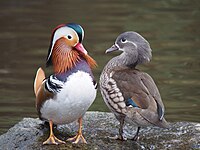
Photo from wikipedia
Abstract Arthrocereus belongs to the Cactaceae family, which comprises 124 genera and 1438 species distributed throughout the Americas. The present study aimed to investigate pollen morphology, to provide taxonomic and… Click to show full abstract
Abstract Arthrocereus belongs to the Cactaceae family, which comprises 124 genera and 1438 species distributed throughout the Americas. The present study aimed to investigate pollen morphology, to provide taxonomic and phylogenetic value for the knowledge of the group, in order to clarify the relationships among its taxa. Ten taxa were analyzed: A. glaziovii , A. melanurus subsp. magnus , A. melanurus subsp. melanurus , A. melanurus subsp . odorus , A. rondonianus , A. spinosissimus , one possible new species (sp.1), and three taxa with difficult taxonomic delimitation close to A. melanurus (sp.2, sp.3, sp.4), being six accepted taxa and four of uncertain position. The pollen grains was acetolyzed, measured and described, electron photomicrographs were taken, and multivariate analysis was conducted. Descriptions, measurements and photomicrographs are presented. Arthrocereus can be characterized by presenting pollen grains which are large, isopolar, oblate spheroidal, prolate spheroidal and subprolate, with a very small to small polar area, subcircular and subtriangular amb, 3–6-colpate with long to very long colpi; microechinate exine, perforations with conspicuous to inconspicuous annuli. Palynological results indicate two morphological patterns in the studied taxa: the first (I) is related to the 3-colpate pollen grains and the second (II) to the 3–6-colpate pollen grains. The principal component analysis and hierarchical cluster analysis confirm the separation of species using quantitative pollen grain variables. The analysis of the pollen grains revealed that the genus is stenopalynous and there is significant overall correspondence in the pollen variations among the taxa, which provides support of taxonomic and phylogenetic value for future studies in the genus.
Journal Title: Review of Palaeobotany and Palynology
Year Published: 2019
Link to full text (if available)
Share on Social Media: Sign Up to like & get
recommendations!